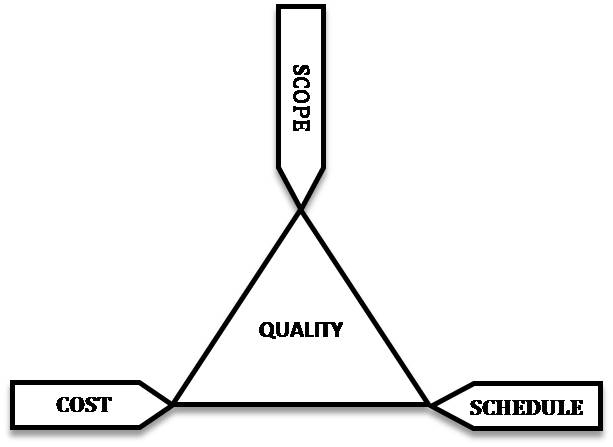The Project Management Triangle (called also Triple Constraint or the Iron Triangle) is a model of the constraints of project management. It is a graphic aid where the three attributes show on the corners of the triangle to show opposition. It is useful to help with intentionally choosing project biases, or analyzing the goals of a project.[1] It is used to illustrate that project management success is measured by the project team‘s ability to manage the project, so that the expected results are produced while managing time and cost.[2][3][4]
Like any human undertaking, projects need to be performed and delivered under certain constraints. Traditionally, these constraints have been listed as “scope” (features and quality), “time”, and “cost”.[5]These are also referred to as the “Project Management Triangle,” where each side represents a constraint. One side of the triangle cannot be changed without affecting the others. A further refinement of the constraints separates product “quality” or “performance” from scope, and turns quality into a fourth constraint.
